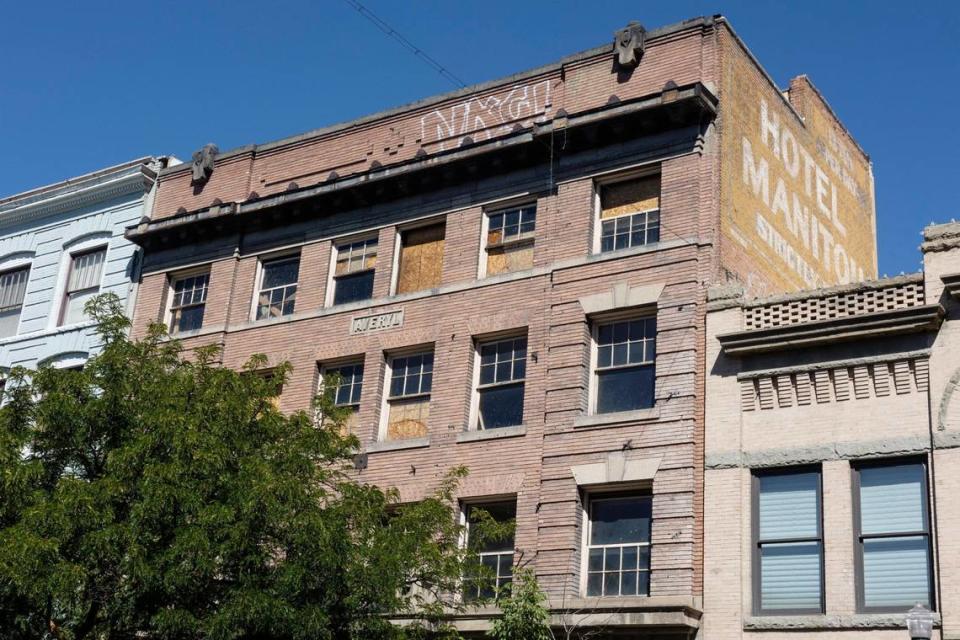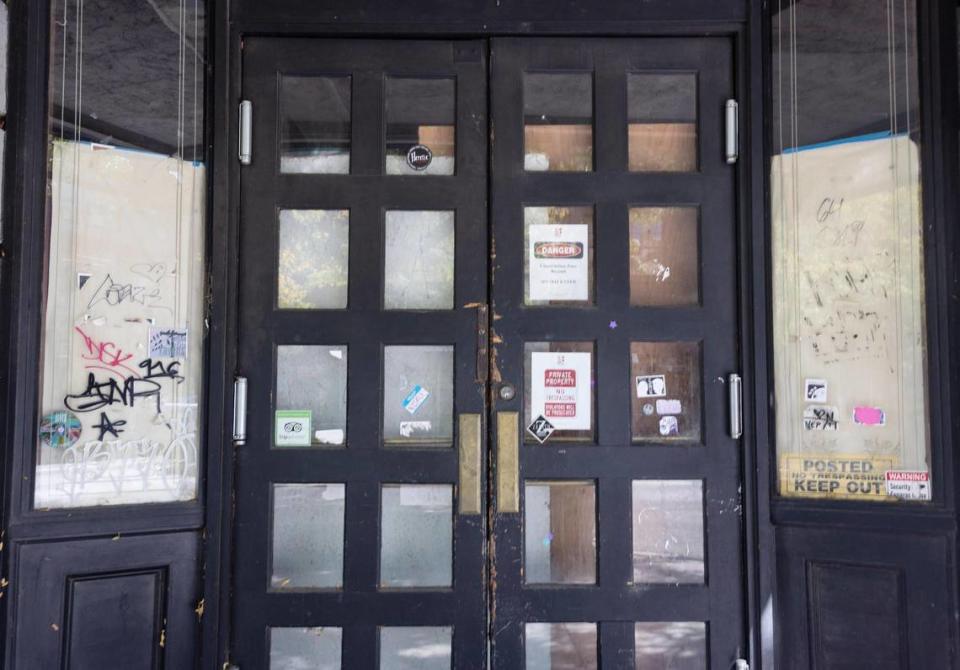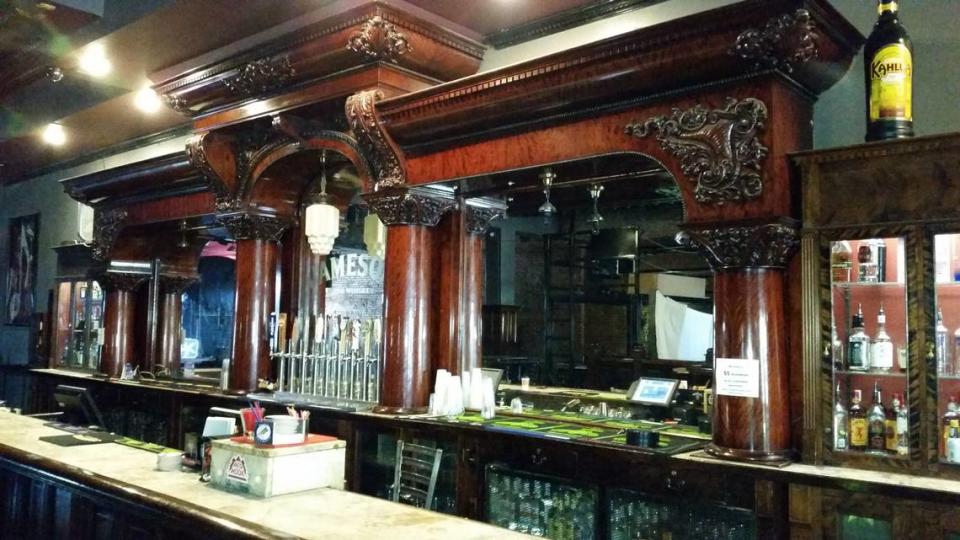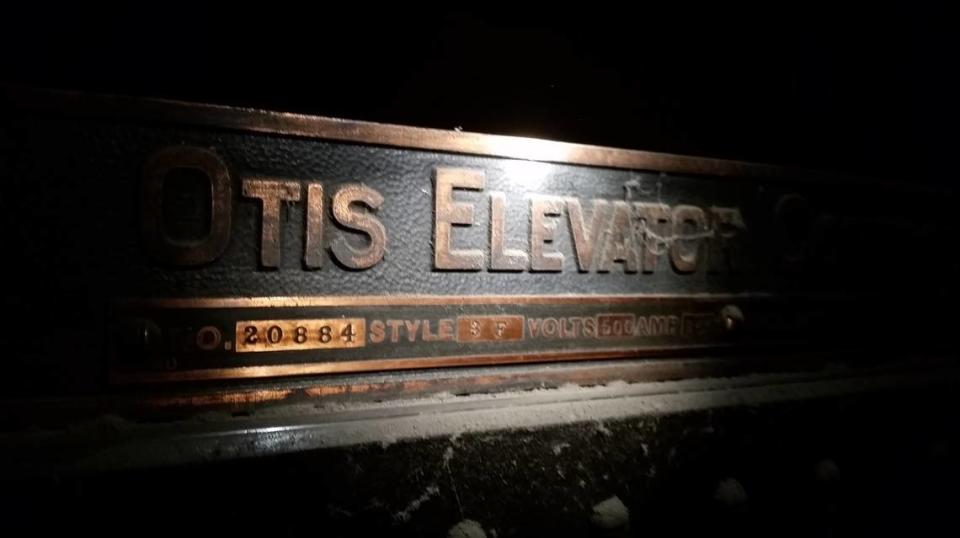History in the remaking: Former Bouquet to be restored to its original 1910 design
The restoration of one of Boise’s oldest pieces of architecture to its former glory has turned out to be no ordinary remodeling project.
While at work on the four-story, red-brick building at 1010 W. Main St., Rob Thornton has often felt more like an archaeologist than an architect. He has opened rooms closed for decades, interviewed past owners and scoured old documents.
It’s all part of a project to bring back a piece of history by making the building look as it did when it first opened 111 years ago.
“There’s the old adage about history repeating itself,” Thornton, co-founder of CTY Studio, said in a phone interview. “… A lot of cities around the world, because of either disaster or warfare, had to be completely rebuilt. A lot of the time those people would rebuild as closely as they could to the way things used to be. It’s like a collective memory you can walk around in.”

While the building’s ground floor was most recently the Ice Bouquet in 2015, and the Bouquet bar before that, the three upper stories haven’t been used in nearly 60 years.
Dating to 1910, the Averyl building has some serious history behind it. It was one of the first in the state to have an elevator and once held a silent movie theater.
The building was bought six years ago by Boise native and chef Cal Elliott and local developer Michael Hormaechea. It was their idea to to restore the vacant building into a boutique hotel.

“I think Boise needs a historic hotel,” Elliott said in a phone interview. “I see us as being a place where travelers and locals and everybody can meet and mingle and be proud of their city. There have been a lot of new hotels, but they’re all chains, and they’re all new-build. This (hotel) should be near and dear to any Boisean who’s been in the Bouquet building.”
The building has had several incarnations in the last century. The Boz Theater. The Hotel Manitou. The Granada Theater. The Tiner Building. The Bouquet. But when it first opened, it was dubbed the Averyl Building in honor of the owner’s niece.
Its new name, the Avery Hotel, will be an homage to the original name and another example of Elliott and Hormaechea’s desire to restore history.

Government incentives to preserve history
The preservation effort comes with financial benefits.
It’s allowed the owners to partner with the Capital City Development Corp., Boise’s urban renewal agency, to receive reimbursements for the project.
The City Council accepted a permanent easement to the building’s facade, meaning the city will take on much of the facade restoration and future maintenance costs.
Elliott received a historic preservation certification from the National Park Service in 2018 that gives him tax credits for restoration.
In total, the Capital City Development Corp. estimates the developers will be reimbursed $1.06 million of the $8.5 million rehabilitation costs.
The parts of the front and rear facades that were added in the 1970s will be restored to their original design. Exterior rehabilitation will include masonry restoration, replacing the rear fire escape with “small gloss-black painted steel balconies reflecting the historic profile and appearance of original fire-escape landings,” roof repairs, and replacing windows and doors to match their originals.

New hotel to have two dining experiences
Unsurprising for a project by Elliott — a former Michelin star-earning New York City chef and restaurant owner who recently returned to his hometown — the Avery Hotel will have two restaurants.
The back will be rebuilt into a gastropub and bar called Tiner’s Alley. Its focal point, like the former Bouquet’s, will be a large Brunswick bar that has traveled from the Overland Hotel around the turn of the century to a handful of other locations in the city.
“The centerpiece of the old Bouquet was an ornate, gargantuan, Brunswick back bar of cherry-stained mahogany, manufactured in Boston in 1903,” says a 1994 article from the Boise Blues Society on the history of the Blues Bouquet. “It was so large it had to be broken down into 14 sections, which were shipped around Cape Horn to San Francisco, then sent by wagon train to Boise.”

The front of the building will be home to The Avery restaurant, where a side vestibule will be added to what was once a waiting area for movie-goers.
“So when you walk into the restaurant, you’ll look down at these little bitty square tiles in a pattern,” Thornton said. “That’s what people stood on about (100) years ago when they were getting a ticket to go to the silent films.”
Interior rehabilitation will include the restoration of the original hotel lobby space, winding staircase and historic finishes within upper-floor landings and corridors. A crawl space in the basement will become offices. The hotel floors will be restructured to go from 56 rooms to 39 rooms.

Boise’s past brought back to life
As he works on the project, Thornton likes to imagine the hotel’s former guests. The Manitou Hotel, he said, was mostly used by men arriving in Boise looking for work. Thornton found a couple of rooms that, unlike the others, have private bathrooms. He imagines a young woman, perhaps a teacher, showing up to Boise in need of a room and not wanting to share a toilet with the rest of the floor.
“It’s a period piece; it’s a time capsule,” Thornton said. “When we walked in there initially (in 2015), everything was the same as it was when it was built. The light fixtures, the doors, the floors, the walls, the trims — nothing had been changed upstairs in that hotel.”

The Averyl restoration is a way to bring Boise back in touch with its past, Thornton said. After 35 years in architecture, he has come to see structures as less permanent. It’s nice, for once, to get to rebuild rather than tear down the dreams of a long-gone architect. Thornton, 62, will be one of those himself someday.
“I think once you get past about 55 in whatever your profession is, you think, ‘You know, I’m probably not going to be remembered,’ ” he said. “All this stuff, particularly in Boise, is going to get knocked down, and something else will go up again. But it’s a way of really remembering the owner and architect and their vision in 1905 to 1910 when they did that. The history, for them, will stay alive.”
The city’s Design Review Committee is reviewing the project. The owners hope to start construction by November and complete it by early 2023.

Sally Krutzig covers Treasure Valley growth and development. Have a story suggestion or a question? Email Krutzig at skrutzig@idahostatesman.com.
Billionaire’s firm wants to build 8-story hotel next to historic downtown building
Housing trend finally breaks: Boise-area home prices drop for first time in 15 months
Neighbors furiously fought this Boise housing development. Here’s what a judge just ruled

 Yahoo Movies
Yahoo Movies 
